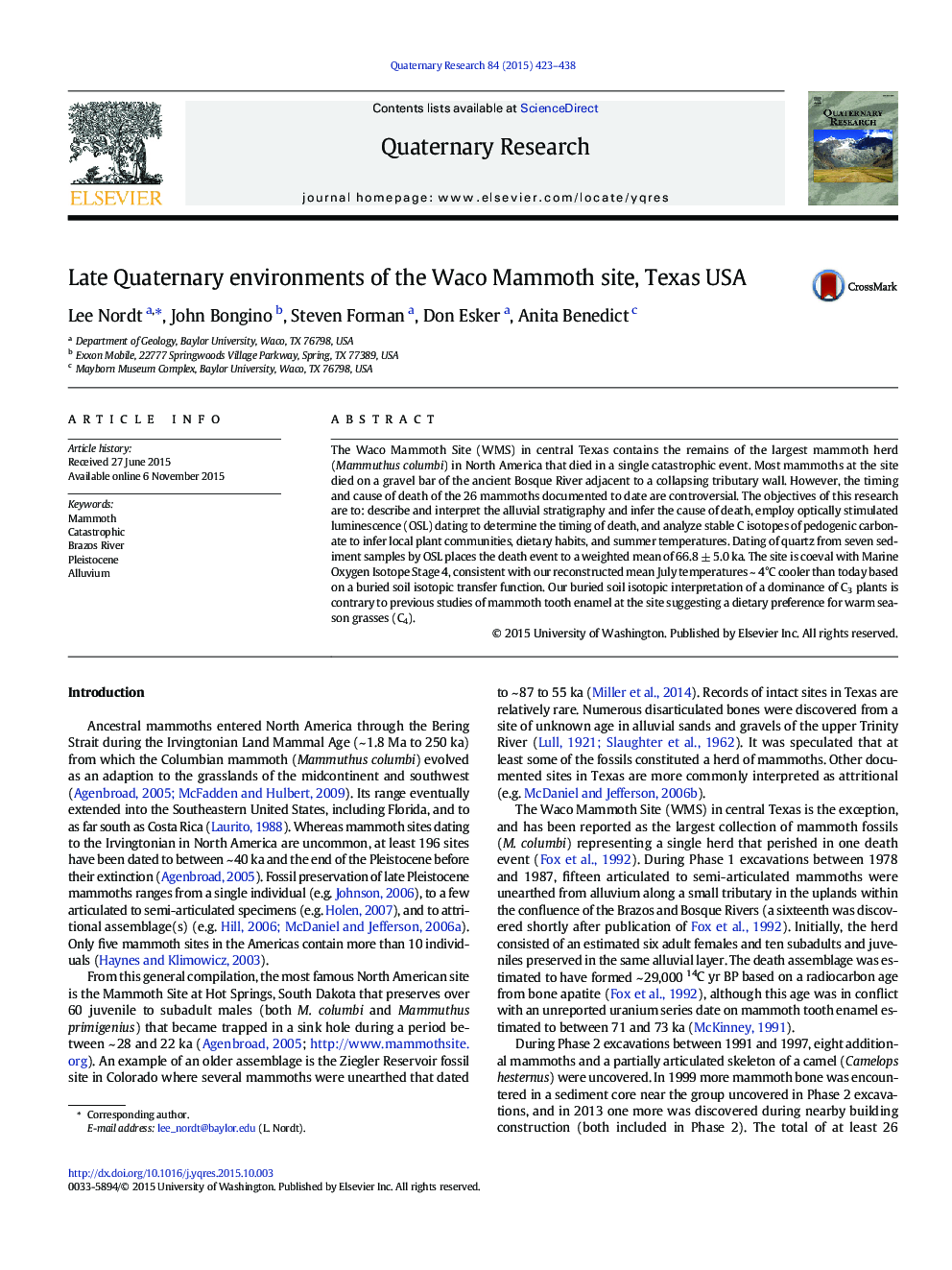| Article ID | Journal | Published Year | Pages | File Type |
|---|---|---|---|---|
| 1045048 | Quaternary Research | 2015 | 16 Pages |
The Waco Mammoth Site (WMS) in central Texas contains the remains of the largest mammoth herd (Mammuthus columbi) in North America that died in a single catastrophic event. Most mammoths at the site died on a gravel bar of the ancient Bosque River adjacent to a collapsing tributary wall. However, the timing and cause of death of the 26 mammoths documented to date are controversial. The objectives of this research are to: describe and interpret the alluvial stratigraphy and infer the cause of death, employ optically stimulated luminescence (OSL) dating to determine the timing of death, and analyze stable C isotopes of pedogenic carbonate to infer local plant communities, dietary habits, and summer temperatures. Dating of quartz from seven sediment samples by OSL places the death event to a weighted mean of 66.8 ± 5.0 ka. The site is coeval with Marine Oxygen Isotope Stage 4, consistent with our reconstructed mean July temperatures ~ 4°C cooler than today based on a buried soil isotopic transfer function. Our buried soil isotopic interpretation of a dominance of C3 plants is contrary to previous studies of mammoth tooth enamel at the site suggesting a dietary preference for warm season grasses (C4).
